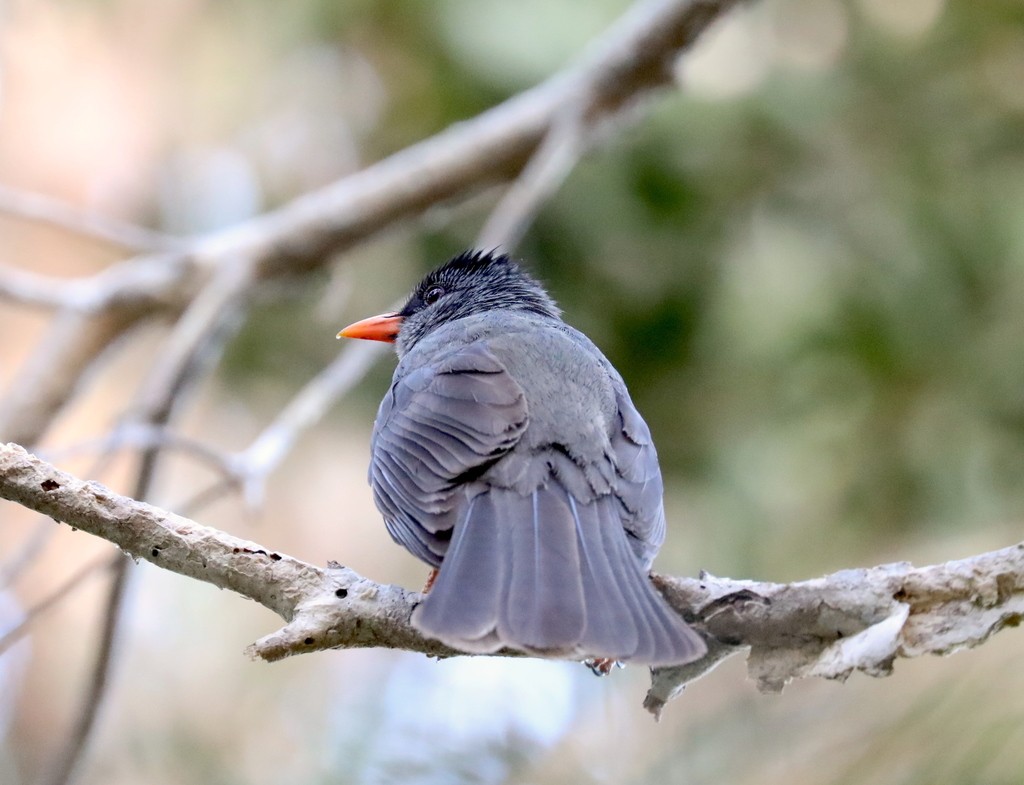Mauritius Bulbul
A species of Indian Ocean Bulbuls and Allies Scientific name : Hypsipetes olivaceus Genus : Indian Ocean Bulbuls and Allies
Mauritius Bulbul, A species of Indian Ocean Bulbuls and Allies
Botanical name: Hypsipetes olivaceus
Genus: Indian Ocean Bulbuls and Allies
Content
Description General Info
 Photo By philboyle , used under CC-BY-NC-4.0 /Cropped and compressed from original
Photo By philboyle , used under CC-BY-NC-4.0 /Cropped and compressed from original Description
The Mauritius bulbul can reach a size up to 24 cm (9.4 in). It is characterized by bright yellow-brown eyes, pink legs, and an orange to yellow-hued bill. Its plumage is generally greyish contrasted with a black crest. The plumage of the juveniles is pale brown. Their bill is blackish. 
Size
27 cm
Nest Placement
Tree
Feeding Habits
Mauritius Bulbul primarily consume insects, seeds, and fruits, with a preference for ripe berries of the Spanish Flag. Their foraging behavior includes actively searching for food items across various substrates.
Habitat
The habitat of mauritius Bulbul encompasses humid native forests, as well as areas with both exotic and preferred food plant species. These birds inhabit upland wet forests, lowland dry forests, and wooded valleys, often where native or certain exotic trees predominate. They generally steer clear of non-native dwarf forests and commercial plantations.
Dite type
Frugivorous
General Info
Feeding Habits
Bird food type

Fruit
Species Status
In earlier times, it was often served as a dish on festive days. Later, its main threats shifted to the replacement of their forest habitat by tea plantations and invasive weeds (including L. camara, which the birds themselves help to spread) and predation by the introduced crab-eating macaque. In the mid-1970s, only 200 pairs remained, but then the decline was stopped. Today it is rare but has a quite stable population; 280 pairs were counted in 1993. 